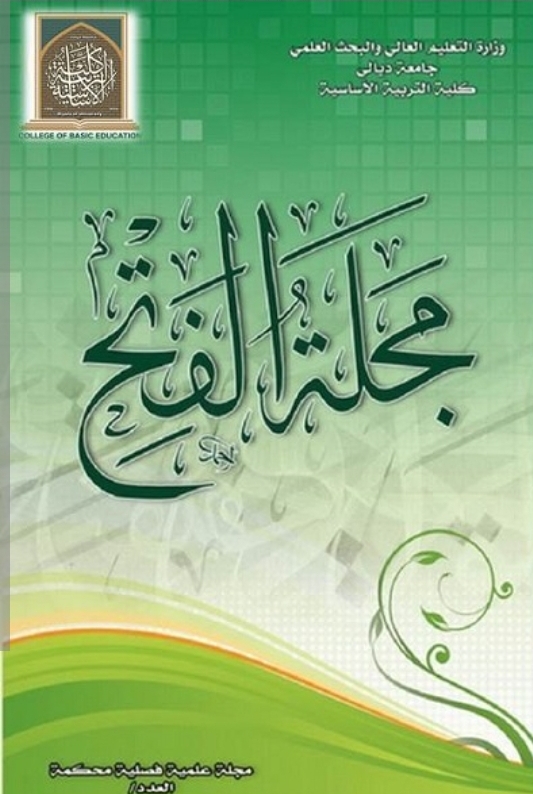The Effect of Blended Learning in Students' Achievement in Comprehension
DOI:
https://doi.org/10.23813/FA/27/3/22Keywords:
Blended Learning , AchievementAbstract
The study aims at finding out the effect of using blended learning on the achievement of second-year students in comprehension. The study sample consists of (30) Iraqi EFL students enrolled in the English language department at College of Basic Education at Diyala University. It is distributed into two groups: the experimental group (15 students) is taught by using blended learning and the control group (15 students) is taught by using the traditional method. The main tool of the present study is measured by using an achievement test. Means, standard NCOVA were used to analyze the data. The study analysis reveals the following results: There are statistical significant differences in the mean scores between the experimental group students, and the control group students in favor of the experimental group
References
Azizan, F.Z. (2010). Blended Learning in Higher Education Institution in Malaysia. Proceedings of Regional Conference on Knowledge Integration in ICT.
-Blended Learning (Staker / Horn - May 2012)" (PDF). Retrieved 2013-10-24. Chen, C.C., & Jones, K.T. (2007). “Blended Learning vs. Traditional Classroom Settings:Assessing Effectiveness and Student Perceptions in an MBA Accounting Course”. The Journal of Educators Online, 4 (1).
Davis, H.C. and Fill, K. (2007). "Embedding blended learning in a university's teaching culture: Experiences and reflections" .British Journal of Educational Technology, 38(5).
Delialioglu, O., and Yildirim, Z. (2007)."Students' Perceptions on Effective Dimensions of Interactive Learning in a Blended Learning Environment" .Education Technology and Society, 10 (2), 133-146.
Driscoll, M.(2002,March 1,2002).Blended Learning: Let's get beyond the hype. e- learning,54.
Ginns, P. and Ellis, R.A. (2009). "Evaluating the quality of e-learning at the degree level in the student experience of blended learning" . British Journal of Educational Technology, 40(4), Pages:652-663.
Hameed, Sh., Badii, A., & Cullen, A.J. (2008). “Effective E-Learning Integration with Traditional Learning in a Blended Learning Environment”. European and Mediterranean Conference on Information Systems.
Hassan Zabon; a new vision in e-learning, issues-application-evaluation, Riyadh: (Al-Dar Al-suleya for education, 2005).
Harrington, A. M. (2010). “Problematizing the Hybrid Classroom for ESL/EFL Students”. TESL-EJ 14 (3).
Mohammed Mahmoud al-Hilla; teaching methods and strategies, Vol.3: (United Arab Emirates, Al Ain, University Book House, 2003).
Oh, E., & Park, S. (2009). “How are universities involved in blended instruction?”Educational Technology & Society, 12 (3).
Saunders, William M. and Goldenberg, Claude (1999)," The effect of instructional conversation and literature logs on limited and fluent English students, story comprehension and thematic understanding". The Elementary School Journal, V.99, N.4
Uddestou. P. and Nwin, L. Teaching and Learning in Further Education Rutledy: (1997)
Usta, E., & Özdemir, S.M. (2007). “An Analysis of Students' Opinions about Blended
Learning Environment”. Retrieved from: http://eric.ed.gov.
Wang, M. J. (2010). "Online collaboration and offline interaction between students using asynchronous tools in blended learning". Australasian Journal of Educational Technology, 26(6), 830-846.
Downloads
Published
How to Cite
Issue
Section
License
Copyright (c) 2023 https://creativecommons.org/licenses/by/4.0/

This work is licensed under a Creative Commons Attribution 4.0 International License.
حقوق النشر والترخيص
تطبق مجلة الفتح للبحوث التربوية والنفسية ترخيص CC BY (ترخيص Creative Commons Attribution 4.0 International). يسمح هذا الترخيص للمؤلفين بالاحتفاظ بملكية حقوق الطبع والنشر لأوراقهم. لكن هذا الترخيص يسمح لأي مستخدم بتنزيل المقالة وطباعتها واستخراجها وإعادة استخدامها وأرشفتها وتوزيعها ، طالما تم منح الائتمان المناسب للمؤلفين ومصدر العمل. يضمن الترخيص أن المقالة ستكون متاحة على نطاق واسع بقدر الإمكان وأن المقالة يمكن تضمينها في أي أرشيف علمي.
لمزيد من المعلومات، يرجى متابعة الرابط: https://creativecommons.org/licenses/by/4.0/.



